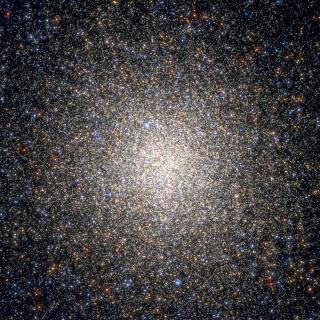Bibcode
Yong, D.; Monelli, M.; Grundahl, F.; D'Antona, F.; Cassisi, S.; Bellini, A.; Aparicio, A.; Anderson, J.; Bedin, L. R.; Piotto, G.; Marino, A. F.; Milone, A. P.
Referencia bibliográfica
The Astrophysical Journal, Volume 767, Issue 2, article id. 120, 20 id. (2013).
Fecha de publicación:
4
2013
Revista
Número de citas
165
Número de citas referidas
144
Descripción
Multi-band Hubble Space Telescope photometry reveals that the main
sequence, sub-giant, and the red-giant branch of the globular cluster
NGC 6752 splits into three main components in close analogy with the
three distinct segments along its horizontal branch stars. These triple
sequences are consistent with three stellar groups: a stellar population
with a chemical composition similar to field-halo stars (Population a),
a Population (c) with enhanced sodium and nitrogen, depleted carbon and
oxygen, and an enhanced helium abundance (ΔY ~ 0.03), and a
Population (b) with an intermediate (between Populations a and c)
chemical composition and slightly enhanced helium (ΔY ~ 0.01).
These components contain ~25% (Population a), ~45% (Population b), and
~30% (Population c) of the stars. No radial gradient for the relative
numbers of the three populations has been identified out to about 2.5
half-mass radii.
Based on observations with the NASA/ESA Hubble Space Telescope, obtained
at the Space Telescope Science Institute, which is operated by AURA,
Inc., under NASA contract NAS 5-26555.
Proyectos relacionados

Vía Láctea y galaxias cercanas
El objetivo general del Proyecto es el estudio de la estructura, historia evolutiva y proceso de formación de galaxias a través de sus poblaciones estelares resueltas, tanto a partir de fotometría como espectroscopia. El proyecto puede dividirse en cuatro líneas principales: I. Historia de formación estelar en el Grupo Local. El objetivo de esta
Martín
López Corredoira